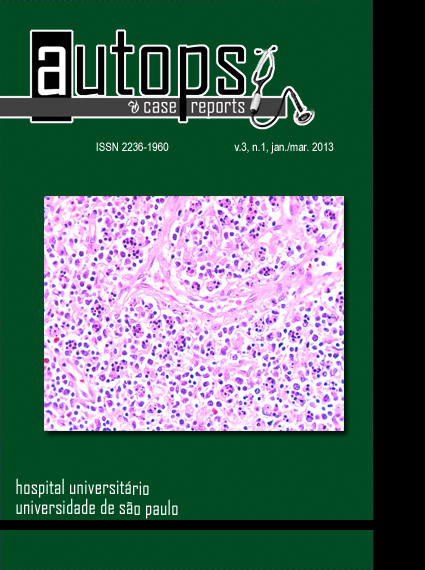Neuromyelitis optica: a challenging diagnosis at secondary hospital
DOI:
https://doi.org/10.4322/acr.%25y.58877Keywords:
Neuromyelitis Optica, Demyelinating Diseases, Respiratory Insufficiency, Magnetic Resonance Imaging, Pulse Therapy, DrugAbstract
Known since the 19th century, neuromyelitis optica (NMO), or Devic’s disease, is an idiopathic immune-mediated inflammatory demyelinating disease of the central nervous system selectively affecting the optic nerve and spinal cord. Commonly diagnosed in demyelinating diseases reference centers, we report an 18-year-old female patient who sought medical attention with a 3-month history of weight loss, headache, and vomiting, followed by diplopia, a burning sensation over the lower limbs, and difficulty walking. A few days prior to hospital admission, the muscle strength in her lower limbs became worse and ascended to the upper limbs associated with sensory changes in the trunk and voiding dysfunction. At admission, the neurological examination was consistent with a spinal cord syndrome. After few days of hospitalization, she was tetraplegic with severe signs of brainstem involvement requiring mechanical ventilatory support. Intravenous methylprednisolone and cyclophosphamide were promptly started after ruling out the diagnosis of infectious disease and cord compression. Due to no substantial early improvement, intravenous immunoglobulin was also used. From then on, the neurological status gradually improved. Magnetic resonance imaging showed extensive demyelinating features in the spinal cord, and the serum IgG autoantibody was negative. The patient was referred to a tertiary neurological reference center where she remains under treatment.Downloads
Download data is not yet available.
Downloads
Published
2013-03-28
Issue
Section
Article / Clinical Case Report
License
Copyright
Authors of articles published by Autopsy and Case Report retain the copyright of their work without restrictions, licensing it under the Creative Commons Attribution License - CC-BY, which allows articles to be re-used and re-distributed without restriction, as long as the original work is correctly cited.
How to Cite
Oliveira, A. P. R. de, Taranto, P., Herbst, L., Kirihara, A., Veras, M. L., Silva, A. M. S., Garcia, M. R. T., & Lino, A. M. M. (2013). Neuromyelitis optica: a challenging diagnosis at secondary hospital. Autopsy and Case Reports, 3(1), 53-61. https://doi.org/10.4322/acr.%y.58877



